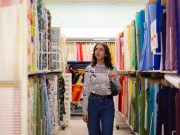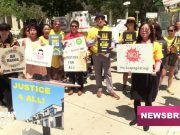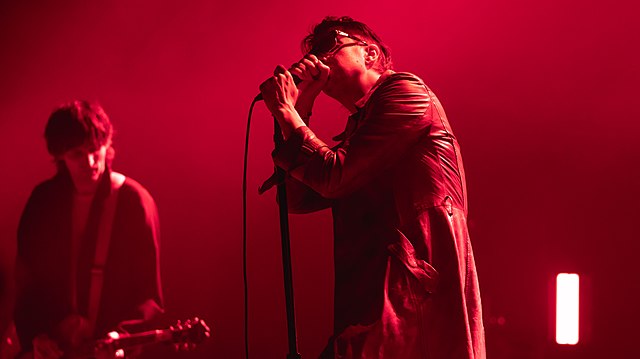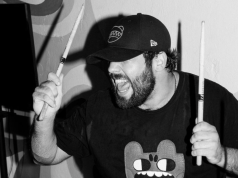Hearing words like “lockdown” and “quarantine” in passing might be enough to excavate a few bleak memories unconsciously buried. That’s trauma in a nutshell, really. It’s the reason why you might second guess going to that indie concert in the cramped warehouse, or the festival with 100,000 people itching to stand front row for the big headliner.
Is the risk of getting sick really worth it?
COVID-19 has changed the way people behave, how businesses are run and how events are carried out. The live music industry has felt the brunt of that blow. Nowadays personal space is something of a delicacy, but that ceases to exist when hundreds, or thousands, of people are all eager to cram into the same enclosure.
Young people have grown tired of stifling their yearning for interpersonal connection. A lot of time came and went while everyone was stuck inside; the desire to try and make up for it can be justified.
“I think [COVID safety] should be a priority, however, I feel like it’s not that big of a deal anymore,” says Amanda Fariñas, a 24-year-old Miami-based event coordinator in the music industry. “To be honest, even if everybody on your team is wearing a mask, there are going to be moments where you’re not wearing a mask. Going to a concert or festival, you can’t control hundreds of people. There’s no way to regulate that in real life.”
Among the bodies pressed against each other at concerts across the country, both COVID-19 and the emergent monkeypox disease are fitting right in. Artists and venues alike are finding it increasingly difficult to do tours without treading the tightrope of falling ill. A positive test result could be the catalyst to consecutive shows being canceled or postponed on short notice, effectively resulting in a loss of funds.
The Strokes, The Rolling Stones, Roddy Ricch, Rina Sawayama, and Adele are among a plethora of musical acts that have had to call off or push back performances this year due to sickness. Dominican musician Juan Luis Guerra had a concert at Miami’s FTX Arena rescheduled for the same reason this past spring.
Despite this, nationwide tours and large-scale festivals are still in full swing, especially in Miami. Nearly 200,000 sunseekers were in attendance at Rolling Loud in July, and the well-anticipated III Points festival is set to bring in thousands of their own attendees this weekend. Ultra Music Festival recently announced their 2023 dates and headliners.
For 26-year-old recording artist NevaNotWorkin, every day is a day to put work in, and the “ecosystem” he works in makes a living off of the music industry. Thanks to safety protocols that were in place when the pandemic started, he feels COVID is no longer the end-all-be-all it once was for concerts. Like Fariñas, he feels that people are going to do as they please regardless. Simply put, “All you can do is guide them and advise them as best as possible,” he says.
Long gone are the days where mask mandates, proof of vaccination, and social distancing protocols stood as pillars to fight the spread of disease at public gatherings. Signage that even slightly alludes to COVID prevention at a concert or festival is rare to find at this point. Maybe this is what people were longing for all along: the illusion of no longer living in the midst of a deadly pandemic.
Sebastian Victor, a 30-year-old Broward resident, music fan, and instrumentalist, last went to a concert in February of 2020 at Ft. Lauderdale’s Revolution Live. After spending the next two years in fear of COVID, he now feels that widespread vaccination and herd immunity have made it easier to be in large crowds again. Regardless, the path up to now has been frustrating.
“We thought [the pandemic] was just gonna be two weeks, it turned out to be two years,” Victor says. “I think we’re being a bit more lackadaisical because now there’s vaccines. As impatient as I am, I have no problem waiting for something as long as I know when it’s going to end. The moment we get to the finish line and you push it back, that’s when I have a problem.”
According to the New York Times, there’s been at least 1,451,171 reported COVID cases in Miami-Dade since the start of the pandemic, accounting for more than half of the county’s residents. Fortunately, total cases in the past two weeks are down 43% compared to the previous two, but the daily average of cases is still just over 500. The virus hasn’t gone away, even if it feels like it.
Monkeypox spreads considerably slower than COVID, but its presence in South Florida still warrants regular attention. Media attention on it has been sparse and subdued, leaving room for hope that the disease won’t develop into the behemoth that unfolded in late 2019. What’s widely known is that it’s a painful rash that may surface on or around the genitals, face, chest, and back.
The CDC reports that it spreads through “close, personal, often skin-to-skin contact,” including direct contact with rashes as well as fabrics, surfaces, or objects touched by someone with the disease. Symptoms begin development three weeks after exposure and can last for two to four weeks. Though the CDC claims there are 633 confirmed cases in Florida, state reports refute that only 507 are confirmed.
No matter what the numbers say, South Florida is once again a free-for-all for audiophiles and party animals alike. Gov. DeSantis isn’t a fan of many health and safety mandates, so evidently the show must go on.
Residents are learning that in order to have peace of mind, their best course of action is to carry on living like it’s 2019 again. Without the post-pandemic anxiety.
































